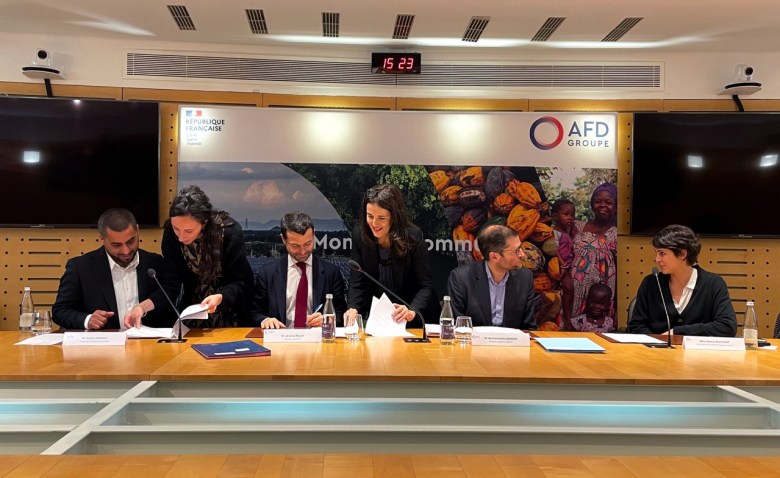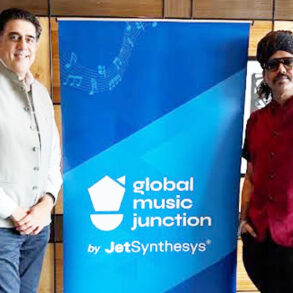By Samer Jaradat
The global music industry has undergone significant transformations over the past two decades, driven by the digital revolution and the rise of streaming platforms. The projected revenue for 2025 is expected to reach $31.52 billion, based on estimates from IFPI. Paid streaming subscriptions are anticipated to grow by 15% from 667 million in 2023 to 767.05 million, according to MIDiA Research.

Emerging markets like the Middle East and North Africa (MENA) have been among the fastest-growing regions globally. According to IFPI, recorded music revenues in MENA grew by 35% in 2021, confirming it as the fastest-growing music region in the world in that year. Streaming now dominates the MENA market, accounting for 95.5% of total revenues, positioning the region as a rising force in the global music industry.
In light of this data and growth trends, the key question is not just how much MENA music is expanding, but how effectively it is being positioned in global markets. Without a structured approach to music export, rapid development risks remaining a regional phenomenon rather than a transformative force in the global industry.
Understanding these growth figures and projections is crucial, although they must be analysed within the context of supporting infrastructure, strategic planning, and long-term sustainability efforts.
Here, we explore the role of music export in building a more integrated and sustainable music ecosystem – to ensure that MENA becomes a thriving global music market.
“These events are proving that the region has much to offer the global music industry”
Nada Alhelabi, MDLBEAST
Developed ecosystems empower global success
While established music markets, such as the US and Europe, benefit from well-developed ecosystems that integrate recorded music, live performances, streaming platforms, and copyright management, MENA is still in the process of developing them. The absence of a fully-structured industry among many MENA countries presents challenges, but technological advancements and increased investments are opening opportunities for emerging artists.
Spotify, for example, reported a 40% annual increase in streams of MENA-originated music outside the region since 2018, an important indicator that global audiences beyond the Arab diaspora are engaging with music from the region.
A key example is Trio Joubran, one of the most exported bands from the region, whose audience consists of 84% non-Arabs. This is reflected both in streaming statistics and live performances, with 80% of their shows taking place outside the region. This demonstrates that MENA music is not only resonating with global audiences but is also finding a stronger foothold in international markets beyond its cultural roots.

IFPI is now launching the first-ever regional music chart to track digital consumption and recognize the growing demand for artists from the region. However, strong streaming numbers alone do not equate to a sustainable digital ecosystem. Many emerging markets, including the MENA, struggle to integrate tech solutions effectively within the broader industry, limiting their ability to capitalize on this digital expansion.
Jean-François Bert from Music Tech France, with whom I’ve talked about this, highlights that one of the main challenges for emerging markets is bridging the gap between traditional industry players and modern digital solutions, which is essential for building a more sustainable music market.

Nada Alhelabi from MDLBEAST emphasized that Saudi Arabia has become one of the most dynamic and rapidly growing music markets globally. Projections for 2030 suggest that Saudi Arabia will be the most attractive destination for music professionals, supported by substantial government investment.
Saudi Arabia has allocated over $64 billion to music and entertainment as part of its Vision 2030 strategy, with the goal of developing a music economy that contributes 3% to the national GDP.

Since 2022, the kingdom has witnessed a 600% increase in live music events, significantly boosting tourism and benefiting the whole supplier chain. Nada highlighted the impact of major festivals such as Soundstorm and Balad Beast, and conference XP Music Futures, which have not only expanded the local scene but have also positioned Saudi Arabia as a global player in live music.
“We have seen a surge in live music events, attracting international audiences while giving local talent more exposure. There is a renewed sense of pride among audiences, and these events are proving that the region has much to offer the global music industry,” Alhelabi noted.
Authenticity and quality help to transcend boundaries


Beyond digital infrastructure, music export is deeply tied to artistic identity and production quality. MENA music must establish a strong presence globally by balancing cultural authenticity with international appeal. Artists such as ElGrandeToto and Saint Levant have successfully blended local influences with global genres, demonstrating how distinct sounds can bridge cultural gaps and attract a wider audience.
The number of Palestinian artists active in the global music scene has also grown significantly over the past two decades. Artists such as Trio Joubran, Faraj Suleiman, Nai Barghouti, Saint Levant, and Sama Abdulhadi, along with Palestinian artists in the diaspora, are making an impact internationally. However, their industry roots often lie outside MENA, meaning that financial circulation and career development happen in external markets rather than being reinvested locally.
Another artist with a unique story behind his artistic identity is Alshami, whose great digital presence and successful journey are making an impact. Alshami describes his unique musical tone as a natural result of his experiences living in Turkey, Europe, and other regions, demonstrating how migration and cultural influences shape new sounds that can transcend geographical boundaries.
Production quality is another essential pillar of music export. Access to high-standard studios, creative spaces, and technological tools enables artists to compete globally. Countries like the UAE and Morocco, which have invested in advanced production infrastructure, are seeing a rise in international collaborations and export-ready music. The development of sound innovation labs that experiment with blending traditional and modern sounds further strengthens the region’s music offering, allowing producers to craft sounds that resonate with global audiences.
In the context of an evolving industry with limited dedicated music export offices and national strategies, independent initiatives and incubators have emerged as vital forces in shaping the MENA music industry. Over the past two decades, these initiatives have played an increasingly important role in supporting artists and positioning them on the global stage. Programs such as NEST Music Incubator and Hunna have become key contributors to industry development, providing artists with essential tools for long-term career growth.
“Incubators are now filling critical gaps”
These initiatives were not established arbitrarily but emerged from an urgent need within the industry. Stakeholders recognized the necessity of creating structured environments where artists can thrive, gain access to international markets, and build sustainable careers. Incubators are now filling critical gaps by providing industry knowledge, production spaces, and access to global networks.


NEST Music Incubator for example, was developed with a tailored approach to address the specific challenges of the MENA music industry. Its structure is designed to provide creators with the necessary tools to build sustainable careers while exporting MENA music globally. Beyond artist development, it also fosters a strong regional music community capable of establishing a competitive presence in international markets.
The impact of such initiatives is evident, as seen in the case of Fares Issac, who blends jazz with Levantine folk music. He has become increasingly engaged in global markets, recently completing a European tour with performances in France, the Netherlands, and Norway.
Through NEST, we facilitated business deals that can create future opportunities, positioning him for long-term success on the international stage. Likewise, Nada Alhelabi highlighted the Hunna initiative by the MDLBEAST Foundation, which has played a key role in developing and exporting female talent in the region, supporting artists like Amal Waqar, Haya Al-Hejailan, Nourah Alammary, and Tamara Qabazard.
Hunna has offered mentorship to women from Kuwait, Oman, Saudi Arabia, Lebanon, Egypt, Morocco, Palestine, Jordan, and the UAE, building a strong network of support and development. The initiative has included a diverse range of artists in its community, including Lynn Adib, Mayssa Karaa, Emel Mathlouthi, Fulana, Seera, Asayel, Xena Shazli, Rita L’oujdia.


The region’s music is characterized by its unique identity and remarkable richness, stemming from its social, geographical, ethnic, religious, and historical diversity. This makes MENA’s music an untapped resource with immense potential in global markets that have become saturated with other genres. Streaming platforms, including Spotify, have highlighted the increasing demand for MENA-originated music beyond the region.
The growing popularity of Moroccan rap, Levant music, and Gulf indie fusion reflects an expanding global curiosity for new sonic identities. As more artists from the region gain international recognition, it becomes clear that demand is no longer confined to niche audiences but is reaching mainstream global music markets.
Strength through cooperation
International cooperation is also a key factor in strengthening MENA’s music export. Many global partners recognize the potential of music in the region and are actively seeking collaborative efforts that ensure fair and transparent long-term benefits. Many fields can be developed through cooperation, such as publishing and sync licensing. Jafra Productions has taken this approach as part of its strategy, recently establishing major partnerships with industry leaders in the global market.
These collaborations between industry partners create win-win opportunities by allowing MENA artists to enter global markets while ensuring that international expertise contributes to the region’s industry development. Jafra has also received support from the French Development Agency AFD and Expertise France in advancing this approach and developing a sustainable ecosystem.


The Future of MENA as a world player
The MENA music industry is at a turning point, and with the right strategies, it has the potential to become a key world player. Strengthening music export requires a combination of industry-wide cooperation, technological integration, and structured investment. By fostering financial circulation within regional music markets, ensuring that revenues from streaming, live performances, and production reinvest in local talent, and developing sustainable career pathways for emerging artists, MENA can create a more self-sufficient industry that thrives beyond external dependencies.
International, regional and local partnerships play a crucial role in this transformation, providing the necessary resources and expertise to support a transparent and fair music economy. The demand for MENA music is rising, and with structured initiatives, policy-driven support, and innovation in production and distribution, the region is poised to establish itself as a vital force in the global music industry for years to come.
This post was originally published on this site be sure to check out more of their content









